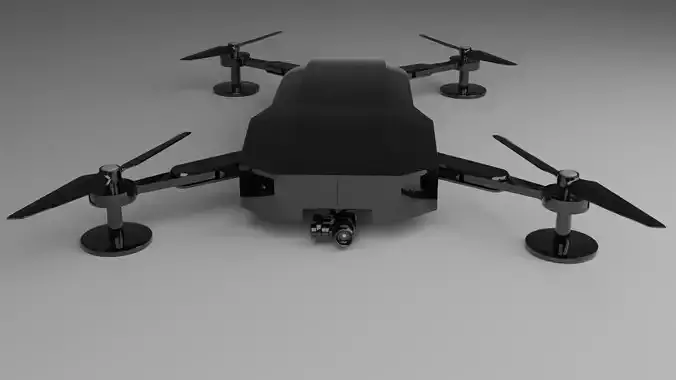A 3D drone, often referred to as a 3D-printed drone, is an unmanned aerial vehicle (UAV) that has been manufactured using 3D printing technology for various components or even the entire drone frame. 3D printing, also known as additive manufacturing, allows for the creation of intricate and customized drone parts by layering materials, typically plastics, metals, or composites, to build up the structure. Here is a description of a 3D drone:
- Frame and Body: The primary structure of the 3D drone is typically made from 3D-printed materials. The frame is designed to be lightweight and durable, with intricate designs that are often not possible using traditional manufacturing methods. The choice of material can vary depending on the specific application, with options including PLA (polylactic acid), ABS (acrylonitrile butadiene styrene), nylon, or even carbon fiber composites for added strength.
- Propellers and Motors: The propellers and motor mounts can also be 3D printed, although high-performance drones may still use traditional components for these parts. The motor mounts are designed to securely hold the motors in place while maintaining the drone's balance and stability.
- Electronics: The electronic components of the drone, including flight controllers, GPS modules, cameras, and communication systems, are typically not 3D printed. These components are carefully integrated into the 3D-printed frame.
- Assembly: Assembling a 3D-printed drone involves attaching the 3D-printed frame to the motors, installing the electronic components, and ensuring all connections are secure. The drone's overall design and assembly may vary depending on its intended purpose, such as aerial photography, racing, or scientific research.
- Customization: One of the significant advantages of 3D-printed drones is the ability to customize the design and features to meet specific requirements. Users can modify the drone's size, shape, and functionality to suit their needs.
- Benefits:Cost-Effective: 3D printing allows for cost-effective production of drone components, especially for hobbyists and small-scale drone enthusiasts.Rapid Prototyping: Design changes and iterations can be quickly implemented, making it ideal for prototyping and experimentation.Lightweight and Strong: Depending on the material used, 3D-printed drones can be both lightweight and strong, enhancing their flight performance and durability.
- Applications: 3D-printed drones find applications in various fields, including:Aerial photography and videographySearch and rescue operationsAgricultural monitoringEnvironmental monitoringDrone racing and freestyle flyingEducation and research vertices = 156,101 polygones = 307,983













